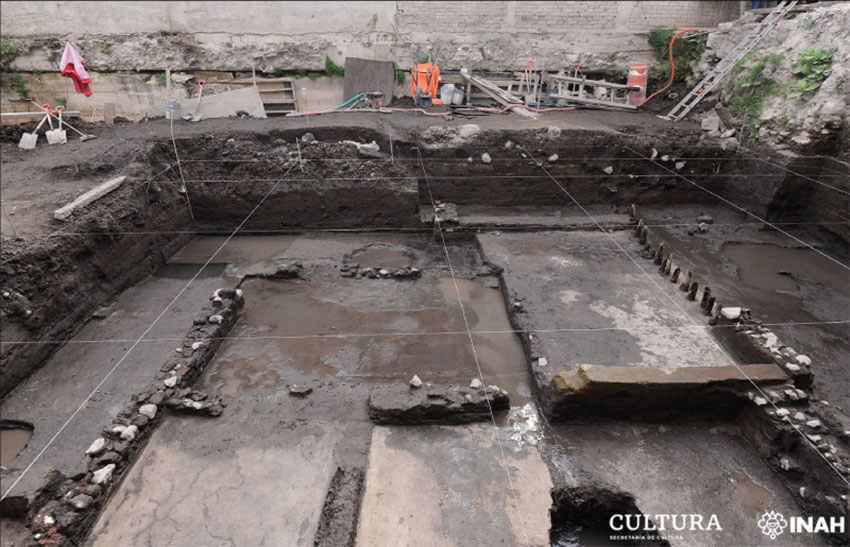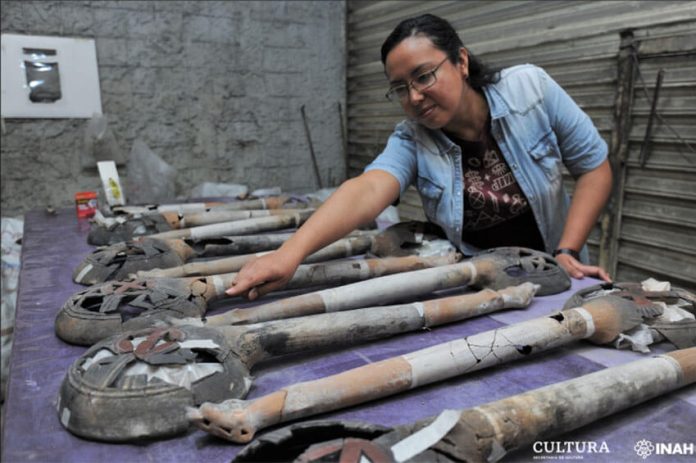Archaeologists have uncovered a post-conquest Mexica altar at a property near Plaza Garibaldi, Mexico City’s home of mariachi music.
A team from the National Institute of Anthropology and History (INAH) discovered the 16th century altar while excavating a property on which the remains of a home once occupied by a Mexica family is located.
Archaeologists believe that the occupants carried out a ritual sometime after the 1521 conquest to mark the end of a cycle of their life and the downfall of the Aztec Empire, whose most important city, Tenochtitlán, was conquered by the Spanish.
“Between chants and the smell of copal, the inhabitants made use of an altar with multiple elements in the patio,” the Culture Ministry said in a statement.
Among the contents of the altar were a pot filled with human ashes, bowls, a pulque cup, a plate and 13 incense burners, each of which was almost one meter high.

The altar was discovered four meters below the surface of the ground and was covered with several layers of adobe to protect it from prying eyes, said Mara Abigaíl Becerra Amezcua, the archaeologist who led the project.
The excavation of the property, located on the main thoroughfare that runs through Mexico City’s historical center, began in September and took three months, she said.
Becerra said the INAH team also found remnants of musical instruments made out of bones, suggesting that numerous rituals took place there.
The 13 incense burners might have been placed in the altar to represent the 20 periods of 13 days in the Mexica 260-day calendar known as the tōnalpōhualli, she said.
“The characteristics of the incense burners also reinforce the Nahua understanding of the universe,” Becerra said.
All of the relics indicate that the altar was used in the first decades after Tenochtitlán was invaded, she said.
It was used as part of a “closure ritual,” which was an “essential act for the worldview” of the Mexica inhabitants of the city, Becerra said.
Mexico News Daily
